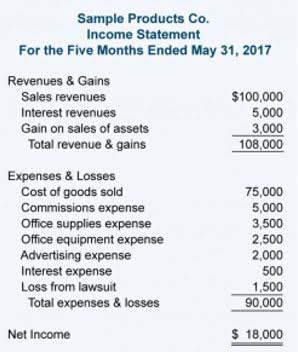
Evaluating the cash flow statement lets you know the cash position of your business in advance. https://www.bookstime.com/ This knowledge helps you take proactive measures to run your business operations optimally. Negative cash flow means that your business is spending more money than it is earning. Continuous negative cash flow cycles will deplete your bank accounts over time and result in a cash crunch.

CFF (Cash Flow from Financing Activities)

Depreciation itself is a non-cash expense, meaning no cash is actually paid out when depreciation is recorded in the income statement. When analyzing the cash flow from operating activities, particularly under the indirect method, we start with net income and adjust for changes in working capital and non-cash expenses. Cash flow statements are important as they provide critical information about the cash inflows and outflows of the company. This information is important in making crucial decisions about spending, investments, and credit. If cash flow is positive, that means the business has engaged in more new debt or equity financing activities that bring cash in than it engaged in debt repayments.
Cash Flow From Investing Activities Importance
This information allows businesses to forecast future cash needs, make informed investment decisions, and track actual performance against budgeted targets. It produces what is called the net cash flow by breaking down where the changes in the beginning and ending balances came from. This is of particular concern if interest rates are expected to rise, as the cost of servicing those debts will increase in conjunction, which could land the business in hot water. Now, you have a fuller picture, and you can make more informed decisions about the financial future of your business (such as not banking on the idea that https://x.com/BooksTimeInc you’re going to earn $45,000 in cash every month). On the other hand, profit is the money remaining from your sales revenue after subtracting all your costs.
Free Cash Flow to the Firm (FCFF): Examples and Formulas
He currently researches and teaches economic sociology and the social studies of finance at the Hebrew University in Jerusalem. Factoring cff formula with altLINE gets you the working capital you need to keep growing your business. Avoiding overstocking and instead focusing on just-in-time inventory systems can reduce holding costs and free up cash.

- A company’s cash flows from financing activities refer to the cash inflows and outflows due to the issuance of equity, dividend payments, and existing stock repurchase.
- 11 Financial’s website is limited to the dissemination of general information pertaining to its advisory services, together with access to additional investment-related information, publications, and links.
- In the above example, the business has net cash of $50,049 from its operating activities and $11,821 from its investing activities.
- You may still need to take out a loan for big purchases like a house or a car.
Three ways to calculate free cash flow are by using operating cash flow, using sales revenue, and using net operating profits. You can also use amortization and depreciation to account for the decreasing value of equipment and plants. On the other hand, if a company turns toward debt options predominantly, it means that such a company is saddled with fixed obligations. Such obligations might be compounded if there’s an increase in interest rates.
- The CFF is built up on three parts, namely a material, energy, and a disposal formula (Figure 1 and Table 1. Parameters of the Circular Footprint Formula).
- The final figure in this section should be your Operating Cash Flow, which represents cash generated (or used) in the business’s core operations.
- For example, the cash inflow would be from investors, such as banks and shareholders, and the cash outflow would be to shareholders as dividends.
- A cash flow statement (CFS) is a financial statement that captures how much cash is generated and utilized by a company or business in a specific time period.
- The respective financing activities include transactions that involve dividends, equity, and debt.
Leave a Reply